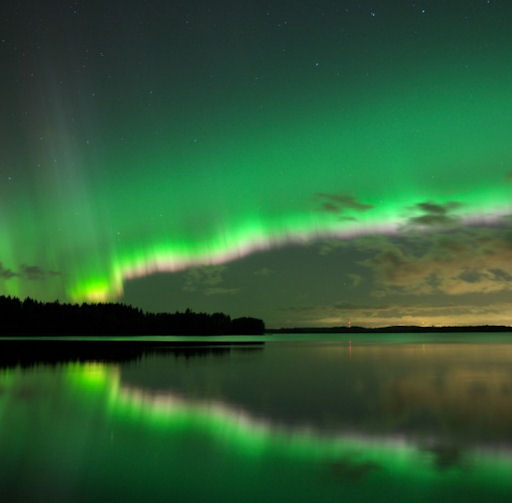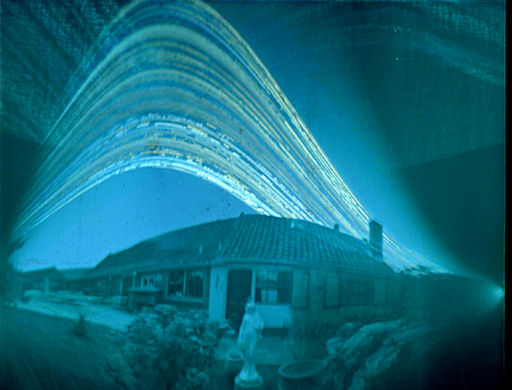Thirty-five new items have just been added to our Meteorite Jewelry collection. Browse the Space Weather Store for something out of this world. | | |
FIRST DAY OF NORTHERN AUTUMN: The seasons are changing. Today, Sept. 22nd at 10:49 a.m. EDT, the sun crosses the celestial equator heading north. This marks the beginning of autumn in the northern hemisphere and spring in the southern hemisphere. At this time of year, day and night are of nearly equal length, hence the name "equinox" (equal night).
AUTUMN LIGHTS: The onset of northern autumn means it's aurora season. For reasons researchers don't fully understand, equinoxes are the best times to see Northern Lights. Right on cue, the Arctic Circle is glowing. Tom Eklund sends this picture taken Sept. 20th from Akaa, Finland:

"This was one nice auroral event--maybe the best display so far during this solar cycle!" says Eklund. "The vivid green belts with their pink lower edges were breaktaking."
The show's not over. A solar wind stream is expected to hit Earth's magnetic field this weekend, sparking more fall colors around the Arctic Circle. Aurora alerts: text, voice.
Realtime Aurora Photo Gallery
SEASON IN A BEER CAN: Jan Koeman of the Netherlands has captured an entire season in a single beer can. On June 21st, Koeman assembled a solargraph--a simple pinhole camera consisting of a beer can lined with photographic paper--and throughout the summer of 2012 he used it to record the sun's daily motion across the Dutch sky. Yesterday, Sept. 21st, he removed the photo-paper for inspection:

"As you can see, the summer wasn't too bad at all!" says Koeman. "There was l ots of sunshine in the backgarden of my parents in Middelburg."
Next up: Autumn in a beer can. Stay tuned.
Solargraph How-to Guides: #1, #2, #3
Realtime Space Weather Photo Gallery
Realtime Noctilucent Cloud Photo Gallery
[previous years: 2003, 2004, 2005, 2006, 2007, 2008, 2009, 2011]
Potentially Hazardous Asteroids (
PHAs) are space rocks larger than approximately 100m that can come closer to Earth than 0.05 AU. None of the known PHAs is on a collision course with our planet, although astronomers are finding
new ones all the time.
On September 22, 2012 there were potentially hazardous asteroids.
Notes: LD means "Lunar Distance." 1 LD = 384,401 km, the distance between Earth and the Moon. 1 LD also equals 0.00256 AU. MAG is the visual magnitude of the asteroid on the date of closest approach. | | The official U.S. government space weather bureau |
| | The first place to look for information about sundogs, pillars, rainbows and related phenomena. |
| | Researchers call it a "Hubble for the sun." SDO is the most advanced solar observatory ever. |
| | 3D views of the sun from NASA's Solar and Terrestrial Relations Observatory |
| | Realtime and archival images of the Sun from SOHO. |
| | from the NOAA Space Environment Center |
| | the underlying science of space weather |

